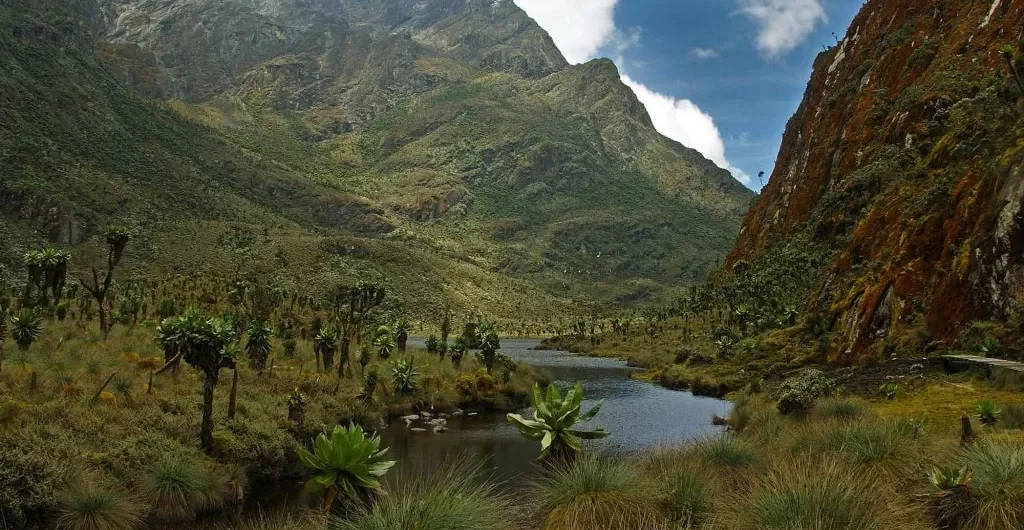In the shadow of Rwenzori Mountains National Park’s soaring peaks are wild rivers, tranquil alpine lakes, and a fascinating array of plant and animal life. And you don’t even have to hike to the summit to see them if you don’t want to.
Two popular trails in the park offer exciting and superbly scenic experiences meandering through forests, pristine landscape of alpine vegetation studded with charismatic giant lobelias, groundsels, and heathers specifically unique to the Mountains of the Moon.
The combination of spectacular snow-capped peaks, glaciers, V-shaped valleys, fast-flowing rivers with magnificent waterfalls, clear blue lakes, and unique flora make this UNESCO World Heritage Site an exceptional destination for hiking expeditions in Uganda.

Rwenzori Mountains National Park encompasses the main part of the legendary Rwenzori mountain chain, which includes some of Africa’s most towering peaks. Margherita towering at 5,109 meters, and Alexandra at 5,083 meters on Mount Stanley, are exceeded in altitude elsewhere in Africa only by Kilimanjaro and Mount Kenya.
In addition to Mount Stanley, there are four other glacial peaks in the Rwenzori: Mount Speke (4,890m), Mount Emin (4,791m), Mount Gessi (4,715m), and Mount Luigi da Savoia (4,627m). The collection of towering peaks makes the Rwenzori Mountains the highest mountain range worldwide
The summits are spectacular, the routes are uncrowded, and the high-altitude forest teems with natural life. Yet, to most bucket-list hikers, the Rwenzori Mountains National Park is largely unknown, lacking in the shadows of Tanzania’s Mount Kilimanjaro.
The park’s plant and animal life
Because of the park’s altitudinal range and the nearly constant temperatures and humidity, Rwenzori Mountains National Park has the wealthiest montane flora in Africa. Many botanical species in the park appear bizarre, such as giant heathers, groundsels, lobelias, and other endemics to the Albertine Rift.
The higher altitude zones, covered by heath and Afro-alpine moorland, extend from around 3,500 meters to the snow line and represent the continent’s rarest vegetation types.
Avian experts recognize the park as an Important Bird Area, containing 217 bird species and several believed to be unique to the Albertine Rift Valley.
In addition to a rich selection of bird species, Rwenzori National Park’s montane forests are also home to threatened wildlife species like the African forest elephant, eastern chimpanzee, and l’Hoest’s monkey. Other endangered animals like the Rwenzori black-fronted or red duiker seem confined to the park boundaries.

Comments